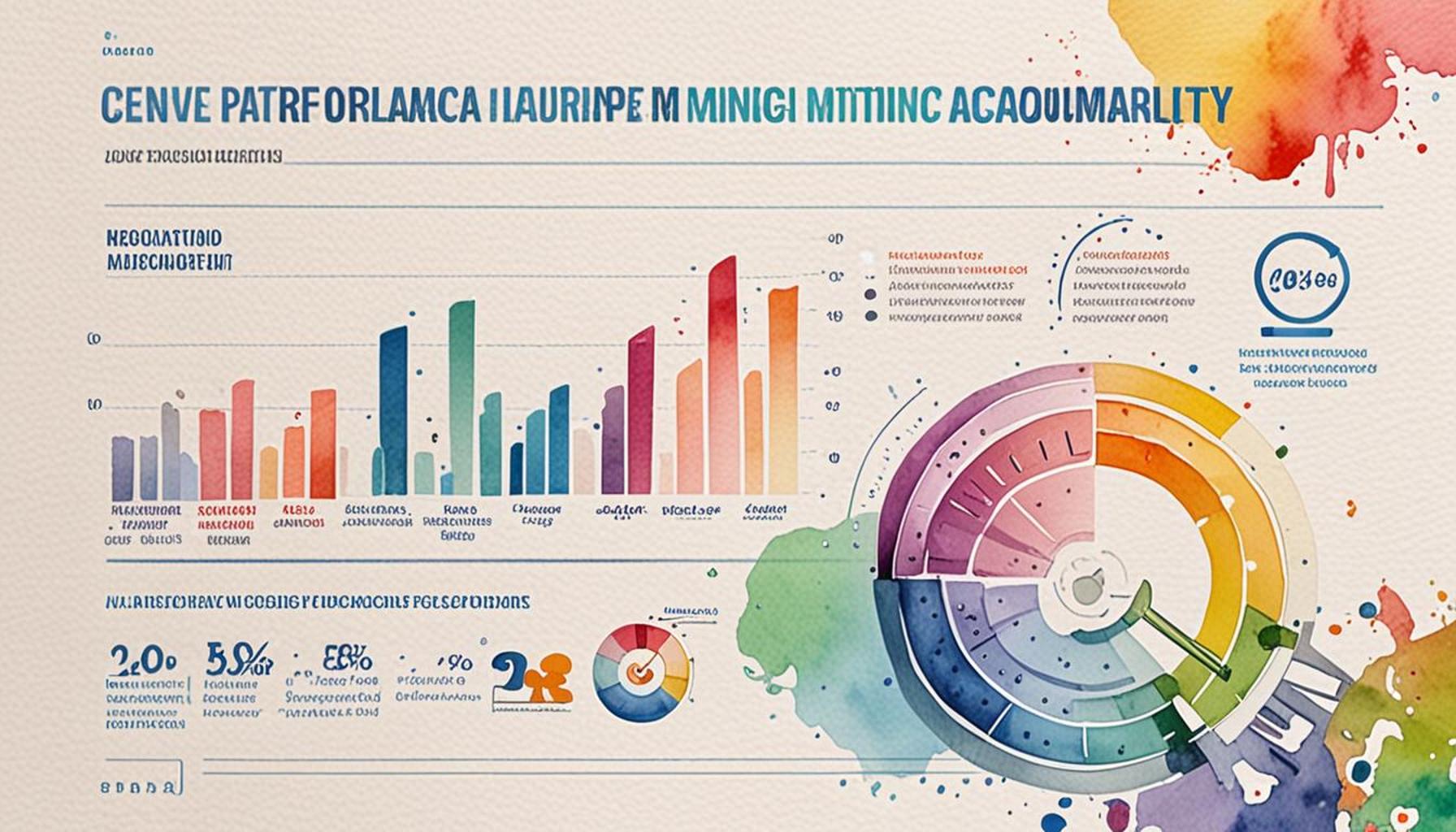How online advertising can facilitate access to social programs and government benefits

Understanding the Role of Online Advertising in Public Awareness
In an era where the majority of individuals turn to the internet for information and resources, the capability of online advertising to serve socially significant purposes is becoming increasingly vital. The digital landscape allows for an unprecedented method of connecting vulnerable populations to essential social programs and government benefits, ensuring that those who need help know about the resources available to them.
One of the most compelling advantages of online advertising lies in its increased reach. Major platforms like Facebook, Google, and Instagram provide tools that allow for highly targeted advertising. For instance, an ad campaigning for benefits like the Supplemental Nutrition Assistance Program (SNAP) can be tailored specifically to low-income families in a certain zip code. By using demographic data, interests, and even behavioral patterns, advertisers can pinpoint users who are most likely eligible for assistance, significantly enhancing the likelihood of reaching those in need.
Moreover, online campaigns are notably cost-effective. Traditional forms of advertising, such as billboards or TV slots, often require substantial budgets and extended planning processes. Digital ads, on the other hand, can be launched with a fraction of the cost and can be adjusted in real-time. This flexibility allows organizations to allocate more budget toward community outreach initiatives, such as workshops or counseling services that accompany the advertising effort. For example, a local nonprofit could use low-cost Facebook ads to raise awareness while simultaneously hosting informational sessions on how to apply for services.
The availability of real-time analytics further enhances the effectiveness of online marketing efforts. Advertisers can monitor clicks, impressions, and engagement metrics instantly. This immediate feedback enables them to make quick decisions on campaign adjustments to optimize performance. If a particular message or visual resonates more with the audience, it can be promoted further, while less effective elements can be modified or removed altogether. The ability to pivot rapidly based on data insights ensures that resources are being utilized efficiently, thus maximizing impact.
As social programs adapt to the shifting needs of American communities, the significance of online advertising becomes ever more pronounced. Successful case studies, such as those involving Medicaid or various food assistance programs, highlight this trend. By effectively leveraging digital advertising, enrollment rates significantly increased, demonstrating that when communities are informed about available benefits, more individuals secure the assistance they urgently require.
In summary, exploring the intersection of online advertising and access to government benefits reveals an essential strategy for ensuring that vital resources are effectively communicated to those who need them most. As we advance further into the digital age, the power of targeted advertising stands as a beacon for making significant strides in public awareness and accessibility of critical social programs.
ADDITIONAL INSIGHTS: Expand your understanding here
The Power of Targeted Outreach
In the world of modern communication, one of the most revolutionary aspects of online advertising is its ability to perform targeted outreach. Unlike traditional media, which casts a wide net without guarantee of connecting with the desired audience, digital platforms can hone in on specific groups with laser-like precision. These targeted ads not only direct attention to social programs but also serve as vital touchpoints for individuals who may not be aware of their eligibility for government benefits.
To illustrate the impact of targeted outreach, consider a scenario where a nonprofit organization seeks to promote a housing assistance program aimed at low-income families. Through algorithms and user data, they can create advertisements that specifically target individuals in certain income brackets, areas of high unemployment, or those who have shown prior interest in social services. This approach ensures that the right message finds its way to those who stand to benefit the most.
Key Advantages of Targeted Online Advertising
The advantages of using targeting techniques in online advertising to promote social programs are manifold. Here are some key points that underline its effectiveness:
- Enhanced Visibility: By tailoring ads to specific demographics, organizations can increase the likelihood of engagement. For example, potential beneficiaries who see advertisements for food assistance programs in their news feeds may feel encouraged to take action.
- Localized Content: Online advertising allows campaigns to be localized, making it easier for organizations to address region-specific needs and community cultures. This not only creates relevance but also builds trust within the community.
- Time-Sensitive Engagement: With the ability to analyze current trends and develop real-time campaigns, organizations can respond swiftly to emerging needs, ensuring that those eligible for time-sensitive benefits, such as emergency aid or disaster relief, are reached promptly.
- Multi-Platform Presence: Online advertising campaigns can easily span multiple platforms, from social media to search engines. This multi-touch approach increases the chances of sounding an alert among different segments of the population.
This precision in targeting becomes particularly critical in the context of government benefits, wherein many programs have specific eligibility requirements. For instance, advertisements for the Temporary Assistance for Needy Families (TANF) program can be crafted to reach single parents or those recently laid off, guiding them toward potential financial support.
As the landscape of social assistance evolves, it is clear that traditional outreach methods may fall short in efficiently connecting those in need with the resources available. By leveraging the innovative capabilities of online advertising, government agencies and nonprofit organizations are positioned to make significant strides in enhancing both awareness and access to essential social programs.
Utilizing Online Platforms for Greater Outreach
One of the most impactful ways in which online advertising can facilitate access to social programs and government benefits is through targeted outreach. By leveraging data analytics and audience segmentation, agencies can identify the populations most in need and tailor their messages accordingly. This strategic targeting can significantly enhance the visibility of available assistance programs. For instance, individuals in low-income brackets may not be aware of government benefits specifically designed to support their needs. Through smart advertising campaigns, these resources can be effectively highlighted, helping to bridge the gap between those who require aid and the offerings available to them.
Engagement Through Interactive Content
Moreover, several online platforms allow for interactive content that engages users more deeply than traditional advertisements. Educational videos, informative quizzes, and interactive infographics can effectively educate potential beneficiaries about their rights and the procedures necessary to access various programs. This captivating approach not only informs but also empowers individuals by making complex information easier to understand. As a result, more people may feel encouraged to apply for benefits they previously thought were beyond their reach.
Real-time Updates and Support
In addition, online advertising can be utilized to provide real-time updates on the availability of government benefits, application deadlines, and eligibility criteria. Using social media channels and targeted email campaigns, agencies can ensure that individuals receive timely and relevant information. This immediacy can be particularly crucial during times of crisis or economic downturns when access to assistance is urgent. The ability of online platforms to disseminate information rapidly can make a significant difference in enabling individuals to secure necessary resources in a timely manner.
| Category | Description |
|---|---|
| Targeted Outreach | Increases awareness of programs among low-income populations. |
| Interactive Content | Engages users and simplifies complex information about aid. |
| Real-time Updates | Provides timely information on benefits, enhancing user engagement. |
With these innovative approaches, online advertising plays a crucial role in not only bridging the information gap but also fostering a more inclusive society where individuals can access the assistance they need. Exploring the strategies and technologies driving these changes can inspire further advancements in how we connect people with the support they require.
ADDITIONAL INSIGHTS: Expand your understanding here
Bridging the Digital Divide
While online advertising delivers immense potential for reaching targeted audiences, it also casts light on an essential challenge—the digital divide. Many individuals who could significantly benefit from social programs remain disconnected from the internet, thereby missing out on crucial information regarding available benefits. Therefore, an effective strategy to harness online advertising for social programs necessitates a dual approach: not only promoting programs online but also ensuring accessibility for all.
Statistics reveal that, as of 2023, approximately 14% of Americans lack access to broadband internet. This disparity primarily affects marginalized communities, including rural populations, the elderly, and low-income households. To counteract these challenges, organizations must prioritize efforts to expand digital literacy and internet access in tandem with their online advertising initiatives. For example, community centers can host digital workshops that promote technology use while simultaneously educating attendees on available government assistance.
Innovative Solutions to Infiltrate the Digital Divide
Addressing the digital divide offers opportunities to leverage online advertising effectively. Here are some innovative solutions:
- Community Partnerships: Nonprofits can collaborate with local libraries, schools, and churches to create advertising campaigns that guide individuals not only towards services but also provide free internet access points. By capitalizing on existing community infrastructure, these programs can increase their visibility and impact.
- Mobile-Friendly Strategies: With many people relying on smartphones rather than traditional computers, optimizing online advertising for mobile devices becomes crucial. Ensuring that advertisements and landing pages are mobile-friendly can significantly enhance engagement rates, making information about government benefits more accessible.
- Outreach Beyond Digital: While the emphasis is on digital channels, multi-channel outreach that includes flyers, community events, and informational meetings ensures that those without reliable internet can still access necessary information. Leveraging local newspapers and radio stations may also bolster awareness about targeted ads that parallel these traditional methods.
- Text Messaging Campaigns: For populations who lack internet access but own a cellphone, text message campaigns serve as a practical alternative to ensure that essential information about social programs transcends the digital sphere. Short, clear messages can be disseminated to inform eligible participants about sign-up periods and program eligibility.
Moreover, analyzing user behavior through analytics can help organizations identify potential gaps in their advertising strategies. For instance, if an online campaign aimed at increasing enrollment for the Supplemental Nutrition Assistance Program (SNAP) sees low engagement rates in specific regions, organizations can pivot to integrate supplementary strategies that facilitate outreach to offline populations. Understanding the audience holistically allows for a tailored approach that resonates with diverse community needs and addresses barriers to access.
Furthermore, the strategic use of social media platforms to foster dialogue and build community can significantly enhance engagement with various demographics. User-generated content and testimonials can act as a persuasive force, encouraging others to explore available social benefits while sharing their experiences.
In this interconnected digital age, closing the gap between online advertising and equitable access to social programs will require innovative solutions and steadfast collaboration among stakeholders. As organizations harness the power of targeted outreach while simultaneously confronting the realities of technological inequities, they set the stage for enhanced participation in vital social programs that can uplift communities across the nation.
ADDITIONAL INSIGHTS: Expand your understanding here
Concluding Thoughts on Online Advertising and Social Benefits Access
In an age where technology permeates every aspect of life, online advertising stands out as a powerful tool for connecting individuals with essential social programs and government benefits. The transformative potential of digital marketing is evident; yet, it is equally vital to recognize the existing barriers that prevent many from benefiting. As highlighted, around 14% of Americans lack reliable internet access, creating a significant gap in the reach of these crucial announcements.
To effectively leverage online advertising, a comprehensive approach is necessary—one that not only focuses on digital outreach but also invests in bridging the dismo digital divide. Programs that emphasize community partnerships, mobile-friendly content, and multifaceted outreach strategies can ensure that no population is left behind. Engaging those without internet access through traditional means, such as text messaging campaigns and local events, broadens participation and aids in spreading critical information.
Moreover, adopting data analytics allows organizations to refine their strategies, targeting efforts where they are most needed and enhancing overall program accessibility. As community engagement grows and resonates through social media platforms, the power of shared experiences and testimonials can inspire others to take action, ultimately leading to higher enrollment rates in these essential programs.
As we move forward, the challenge remains to create an equitable framework for information dissemination that is inclusive and effective. Embracing innovative solutions and recognizing the interconnectedness of technology and community efforts will pave the way for enhanced access to crucial social services, making it possible for more people to thrive. Exploring these possibilities not only serves individual needs but strengthens the fabric of society as a whole.


